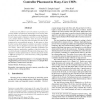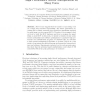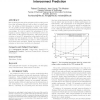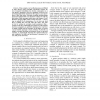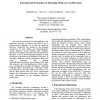89 search results - page 12 / 18 » Moore's Law is Unconstitutional |
ISCA
2009
IEEE
14 years 2 months ago
2009
IEEE
In the near term, Moore’s law will continue to provide an increasing number of transistors and therefore an increasing number of on-chip cores. Limited pin bandwidth prevents th...
EUROPAR
2009
Springer
14 years 2 months ago
2009
Springer
Moore’s Law suggests that the number of processing cores on a single chip increases exponentially. The future performance increases will be mainly extracted from thread-level par...
SLIP
2009
ACM
14 years 2 months ago
2009
ACM
New technologies such as 3D integration are becoming a new force that is keeping Moore’s law in effect in today’s nano era. By adding a third dimension in current 2D circuits...
CEC
2008
IEEE
14 years 2 months ago
2008
IEEE
— Many complex, real world phenomena are difficult to study directly using controlled experiments. Instead, the use of computer simulations has become commonplace as a cost effe...
IPPS
2007
IEEE
14 years 2 months ago
2007
IEEE
The trend of increasing speed and complexity in the single-core processor as stated in the Moore’s law is facing practical challenges. As a result, the multi-core processor arch...
